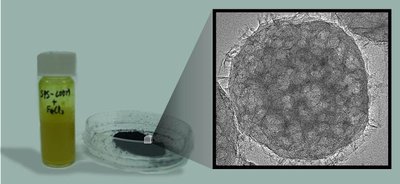Enhanced yet affordable material for supercapacitors
Researchers at Ulsan National Institute of Science and Technology (UNIST) have developed a new method to massively synthesise enhanced yet affordable materials for supercapacitors.
Supercapacitors have attracted increasing attention due to their long life cycle, highly reversible charge storage process and specific power density along with increased concern over the exhaustion of natural resources. Graphene has been recognised as a promising active material for supercapacitors due to its outstanding electrical conductivity and large surface area, as they are the two most important requirements for supercapacitors.
Among the various methods for the fabrication of graphene sheets, the chemical vapour deposition (CVD) technique is highly recommended due to the high conductivity of as-prepared graphene. But the scalability is still needed for commercialisation. Additionally, these limitations called for great interest on further improvement.
The research team, led by Prof Ji-Hyun Jang from UNIST, previously reported a novel approach to synthesise chemical vapour deposition-grown three-dimensional graphene nanonetworks (3-D GNs) that can be mass produced while retaining the excellent properties of 2D graphene and published in the (Nature Publishing Group) Scientific Reports in May 2013.
Here, Prof Jang extended her previous research and demonstrated a unique route to obtain a mass-producible mesoporous graphene nanoball (MGB) with a large surface area and great conductivity, via precursor-assisted CVD, using metal precursors as a catalyst which is applicable to supercapacitors.

Prof Ji-Hyun Jang is from the Interdisciplinary School of Green Energy at UNIST and the fellow researchers include Jung-Soo Lee, Sun-I Kim and Jong-Chul Yoon from the Interdisciplinary School of Green Energy at UNIST. Compared to the conventional graphene synthesis methods, a new way, suggested by the UNIST research group, is scalable and able to produce high-quality and customisable graphene with better environmental impacts.
With the resulting materials, mesoporous graphene balls, the capacity of the supercapacitor has been improved significantly. Due to the unique mesoporous structure, three-dimensional networks are formed, which help to improve conductivity. Furthermore, mesopores inside the graphene surfaces induce nanochannels to transport ions in electrolyte, and improve the properties of supercapacitor.
“When the mesoporous graphene balls are used as an electrode material for supercapacitor, it proves great potential for energy storage devices with high efficiency,” said Prof Jang. “If the properties of mesoporous graphene are improved further by continuous research, developing an electric vehicle with high power will become a realisation not just a dream,” showing their future research plan.
OLED circular polarisation is now electrically switchable
Researchers have discovered a way to control left- or right-handed polarised light via charge...
Nanoscale pixels to advance augmented reality eyewear
Physicists have developed extremely small pixels that can be used in compact AR glasses, using...
Novel semiconductor shows superconducting promise
Researchers from The University of Queensland have demonstrated superconductivity in...





